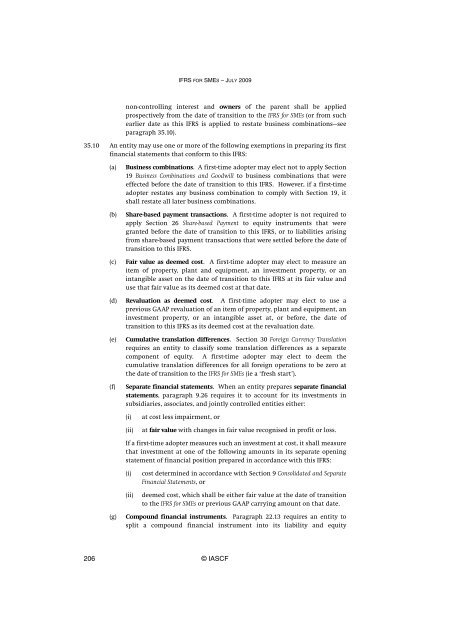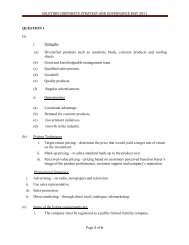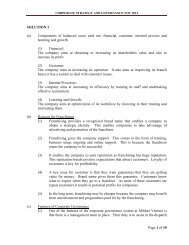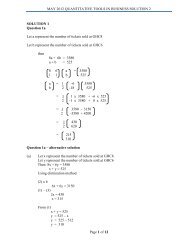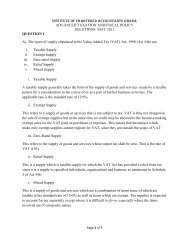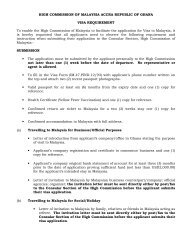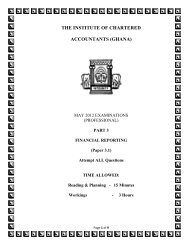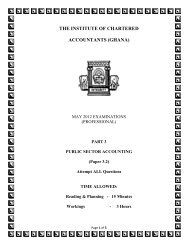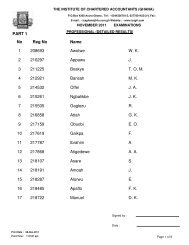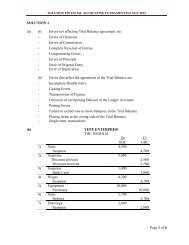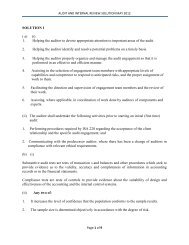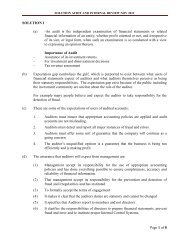(IFRS) for Small and Medium-sized Entities (SMEs)
(IFRS) for Small and Medium-sized Entities (SMEs)
(IFRS) for Small and Medium-sized Entities (SMEs)
You also want an ePaper? Increase the reach of your titles
YUMPU automatically turns print PDFs into web optimized ePapers that Google loves.
<strong>IFRS</strong> FOR SMES – JULY 2009non-controlling interest <strong>and</strong> owners of the parent shall be appliedprospectively from the date of transition to the <strong>IFRS</strong> <strong>for</strong> <strong>SMEs</strong> (or from suchearlier date as this <strong>IFRS</strong> is applied to restate business combinations—seeparagraph 35.10).35.10 An entity may use one or more of the following exemptions in preparing its firstfinancial statements that con<strong>for</strong>m to this <strong>IFRS</strong>:(a)(b)(c)(d)(e)(f)Business combinations. A first-time adopter may elect not to apply Section19 Business Combinations <strong>and</strong> Goodwill to business combinations that wereeffected be<strong>for</strong>e the date of transition to this <strong>IFRS</strong>. However, if a first-timeadopter restates any business combination to comply with Section 19, itshall restate all later business combinations.Share-based payment transactions. A first-time adopter is not required toapply Section 26 Share-based Payment to equity instruments that weregranted be<strong>for</strong>e the date of transition to this <strong>IFRS</strong>, or to liabilities arisingfrom share-based payment transactions that were settled be<strong>for</strong>e the date oftransition to this <strong>IFRS</strong>.Fair value as deemed cost. A first-time adopter may elect to measure anitem of property, plant <strong>and</strong> equipment, an investment property, or anintangible asset on the date of transition to this <strong>IFRS</strong> at its fair value <strong>and</strong>use that fair value as its deemed cost at that date.Revaluation as deemed cost. A first-time adopter may elect to use aprevious GAAP revaluation of an item of property, plant <strong>and</strong> equipment, aninvestment property, or an intangible asset at, or be<strong>for</strong>e, the date oftransition to this <strong>IFRS</strong> as its deemed cost at the revaluation date.Cumulative translation differences. Section 30 Foreign Currency Translationrequires an entity to classify some translation differences as a separatecomponent of equity. A first-time adopter may elect to deem thecumulative translation differences <strong>for</strong> all <strong>for</strong>eign operations to be zero atthe date of transition to the <strong>IFRS</strong> <strong>for</strong> <strong>SMEs</strong> (ie a ‘fresh start’).Separate financial statements. When an entity prepares separate financialstatements, paragraph 9.26 requires it to account <strong>for</strong> its investments insubsidiaries, associates, <strong>and</strong> jointly controlled entities either:(i)(ii)at cost less impairment, orat fair value with changes in fair value recognised in profit or loss.If a first-time adopter measures such an investment at cost, it shall measurethat investment at one of the following amounts in its separate openingstatement of financial position prepared in accordance with this <strong>IFRS</strong>:(i)(ii)cost determined in accordance with Section 9 Consolidated <strong>and</strong> SeparateFinancial Statements, ordeemed cost, which shall be either fair value at the date of transitionto the <strong>IFRS</strong> <strong>for</strong> <strong>SMEs</strong> or previous GAAP carrying amount on that date.(g)Compound financial instruments. Paragraph 22.13 requires an entity tosplit a compound financial instrument into its liability <strong>and</strong> equity206 © IASCF


